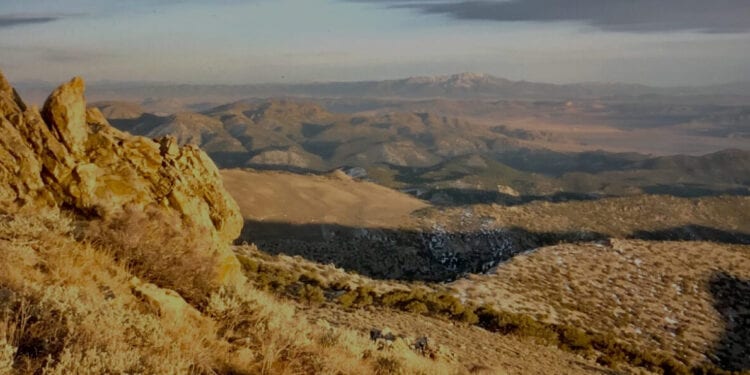IP Identifies 2km Long Nevada Gold Target
Timberline Resources Corporation (TSXV:TBR) has identified a large anomaly target through an Induced Polarisation – Resistivity (IP) geophysical survey at its 100%-controlled Eureka Project in Nevada.
The IP survey included 28.4 line-km over eight lines, focused primarily at the Lookout Mountain Target.
Highlights survey result include:
- A strong chargeability anomaly spanning at least two km in a north-south direction east of the Lookout Mountain gold resource and east of the Rocky Canyon Zone;
- The identification of two major fault zones: the Lookout Mountain Fault (LMF) which is associated with known gold mineralisation, and the East Bounding Fault (EBF) which is undrilled; and
- A moderate chargeability anomaly occurs on the test line at the Windfall Target and has a similar morphology and relationship to known gold mineralisation as at the Lookout Zone.
In November 2020, Timberline reported a district-scale gravity survey at Eureka.
President and CEO, Patrick Highsmith, said these two large-scale geophysical surveys are complementary, and the Timberline technical team is working towards a fully integrated interpretation of these data with the growing geological database, mapping, and modelling.
“The 2020 IP survey at the Eureka Project suggests a much larger footprint to the mineral system than is evident from drilling to date,” Mr Highsmith said.
“Our integrated interpretation of the IP and gravity surveys in concert with our improved understanding of the geology has highlighted many new targets at Eureka.
“Our initial focus in 2021 will be to link the recently announced high-grade step-out drill intercepts with the main body of the Lookout Mountain resource.”
The IP data model shows that the newly defined anomaly is associated with a major fault (EBF) and has a complex shape. There is a saddle between two lobes that rise closer to surface, the northern of which comes to within approximately 150m of surface.
There is also a separate anomaly farther north in the Rocky Canyon area.
The 2020 core holes were drilled to the west of and in the saddle of the main IP feature and terminated above the interpreted depth of the strongest part of the anomaly. The known gold mineralisation at Lookout Mountain and the higher-grade Water Well Zone is associated with the lower magnitude part of the IP response.
Historic gold mining at Windfall recovered approximately 115,000 ounces of gold from altered shale and dolomite along a major fault, a similar stratigraphic and structural setting as at Lookout Mountain. The sedimentary rocks dip east from the historic pits. Drilling by Timberline and others has intercepted relatively high-grade gold (> 3 g/t) between and beneath the pits, as well as along trend to the north and east.
The company completed a single east-west IP test line between the Windfall and Rustler historic open pits. As at Lookout Mountain, a distinct chargeability anomaly occurs east of the known mineralization. Management believe the shape of the geophysical anomalies supports an eastward dip to the favourable rock sequence.
The geophysics also suggests the presence of several faults in the Windfall area. The single line survey at the Windfall area identifies a need for a more extensive survey, and the team is planning follow-up geophysics for 2021.












